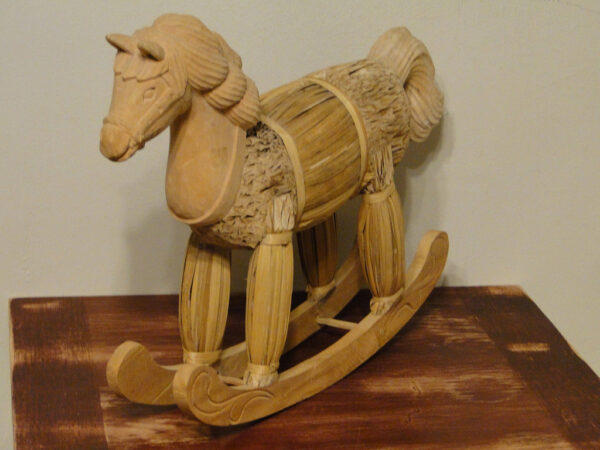Wood carving, like weaving, is among the oldest crafts in the world. Thousands of years ago, during the Stone Age, prehistoric people used different types of wood as handles for their weapons and hunting tools.
Throughout the ancient civilisation, the art of wood carving progressively flourished and developed. In Egypt and the Mesopotamia, religious figures carved in wood were placed in catacombs to protect the dead. In Rome and Spain, the early Christian churches also made use of the wooden art to demonstrate the life of Christ for the millions of worshippers.
From there, wood carving became a perfect medium for artists who wanted to express their individuality, feelings and emotions.
Wood Carving Across the World
Wood carving was a part of the culture of many people across the globe. From Europe, America and Africa, to Asia—beautifully carved wooden figures were, and still are, prominent forms of art.
In religious countries like Spain, Italy and the Philippines, the Christian churches and other houses of worship portrayed the nativity scenes and the images of angels and saints from wood carvings made of maple, birch, cedar, lime, pine and oak trees. Also, in Norway, the walls of the Urne Style Church, which is now a UNESCO world heritage site, were decorated in elaborate foliage details that were carved in wood.
In Alaska and northern Canada, a group of indigenous people known as the Inuit used wooden containers and utensils made of driftwood. Folk artists in Sweden also created their musical instruments of out timbers. Wonderful wooden arts like Buddha statues or Kumari windows are also found in Asian countries like China, Cambodia, Nepal, Japan and Sri Lanka.
Master Wood Carvers of the Past
During the Renaissance period, the art of wood carving seemed to have lost its appeal to people. Then, as if by magic, wood carving sprang back to life with the help of Tilman Riemenschneider and Grinling Gibbons—two of the greatest master wood carvers of the medieval period.
- Tilman Riemenschneider
He was a German sculptor who became a world-renowned master wood carver when he created the famous wood arts like Salome and Eve as well as The Last Supper. Riemenschneider was one of the most prolific sculptors who was a master in using lime wood and stone during the late Gothic and Renaissance period.
- Grinling Gibbons
He was a Dutch-British sculptor and wood carver who was very popular in England during the late 17th and the early 18th centuries. Gibbons’ works were decorative foliage found in many British churches like St. Paul’s Cathedral and the Canterbury Cathedral, as well as mansions like the Blenheim Palace and Hampton Court Palace. His baroque, detailed carvings of flowers, fruits and birds in altars, wall panels, mantels and bookcases can still be found in various royal houses and prestigious universities all over England.
Modern Wood Carving
Today, wood remains to be a favourite material of many folk artists and professional sculptors around the world. More and more people are also becoming interested in wood carving as a hobby because the materials and tools are affordable and very accessible.
The renewed interests in the art of woodcarving may have stemmed from the fact that modern methods of preserving all kinds of woodwork are now available, thereby making it easy for everyone to keep their crafts safe and long-lasting like other sculptures made of marble or porcelain. Also, wood is cheaper and light weight compared to other sculpting resources like clay, marble or metal.
Modern wood carving is not only limited to creating portraits and statues using various types of timbers. Wood artists can also try their hand at carving rocking horses and other usable items like furniture and dinnerware sets. Wood carvers also have the chance to restore antique wood carvings of animals as well as the portraits and statues of people with the help of varnishes and spray sealers.
By using a piece of good-quality wood and a sharp knife, the artists have all the essential tools to begin their journey towards creating beautiful wooden figures made by hands and conjured from their imaginations.
By Debra Wright
Debra Wright is a creative and innovative blogger and online marketing specialist. She uses her wordsmith skills to share her ideas, thoughts, and tips to other people about topics that fascinate her, such as Furniture and Sculpture. Follow Debra on twitter @debrawrites…

